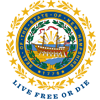Avoid Overdose
Naloxone (Narcan) and nalmefene (Opvee) are Opioid Overdose Reversal Medications (OORMs) that temporarily reverses the effects of an opioid overdose. For people who use heroin, fentanyl and other synthetic opioids (including prescription opioid medications) these can be a lifesaver. OORMs are harmless if administered to a person who has not overdosed on opioid, but will always be effective on a person who has overdosed (more than one administration may be necessary).
You can help someone who is at risk of an opioid overdose. If you use opioids or have friends or family members who do, having an OORM on hand and knowing how to use it can save a life.
If you think someone has overdosed, call 911 first, even before giving medication. It's critical to contact emergency services as soon as possible after an overdose – every second counts.

How Can I Get Naloxone (Narcan) or Nalmefene (Opvee)?
In New Hampshire, this life-saving medication is available three ways:
- The public can get naloxone at any of the nine Doorways,
- A patient can ask his or her doctor to write a prescription for either medication, and
- The medication is available without a prescription at many pharmacies throughout the state.
Find Naloxone/Narcan Find a Doorway
Preventing an Overdose
You have an important role to play in addressing this public health crisis.
- Talk with your doctor or pharmacist or contact your local Doorway to learn how you can get opioid overdose reversal medication.
- Learn the signs of opioid overdose, like pinpoint pupils, slowed breathing, blue lips or fingertips, or loss of consciousness.
- If you or someone you know have an opioid use disorder, effective treatment is available. To find help, contact 211.
Signs of an Overdose
- Unresponsive / can’t wake up
- Body is limp
- Blue / dark purple lips or fingertips
- No or slow breathing
- No or weak pulse
- Snore-like gurgling noise
- Pinpoint pupils
Naloxone (Narcan) Quick Facts
- Only works for someone on opioids
- Cannot be used to get high
- Not addictive
- Adverse side effects are rare
- Safe and easy to use
- Takes 2–5 minutes to take effect
- May require more than one dose
- Stays in the body for 30–90 minutes
- May cause withdrawal (e.g., chills, nausea, vomiting, agitation, muscle aches)
Nalmefene (Opvee) Quick Facts
- Only works for someone using opioids
- Cannot be used to get high
- Not addictive
- Adverse side effects are rare
- Safe and easy to use
- Take 2-5 minutes to take effect
- May require more than one dose
- Stays in the body for 11 hours
- May cause withdrawal (e.g., chills, nausea, vomiting, agitation, muscle aches)



